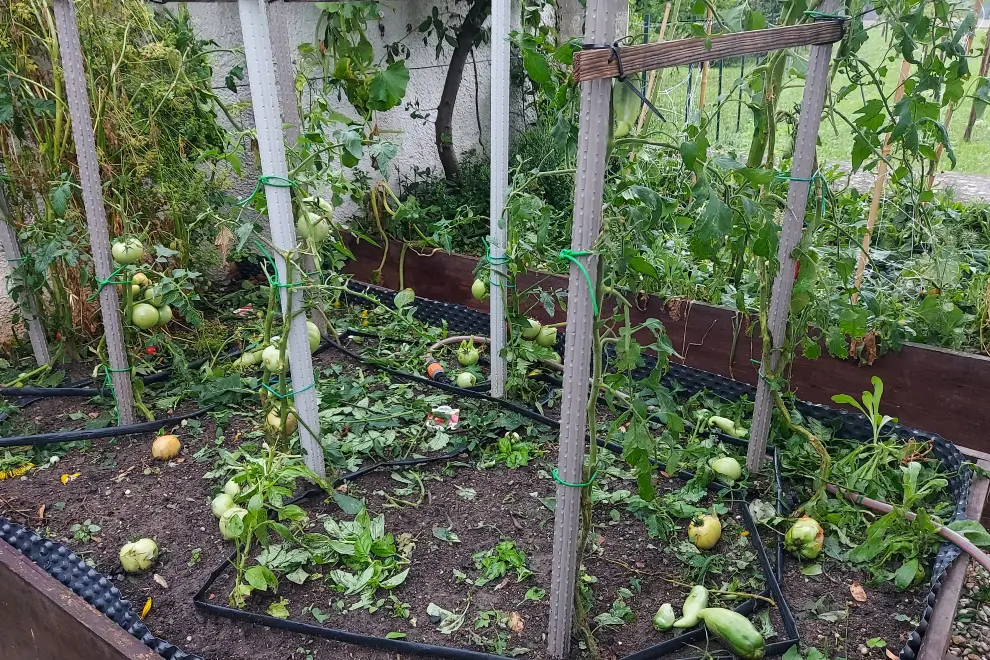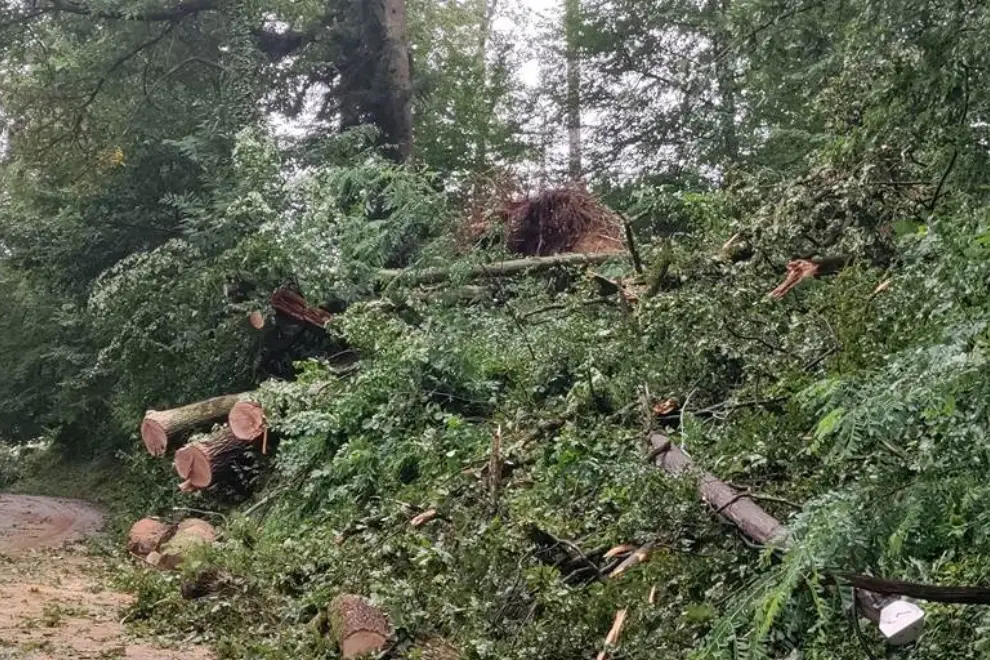No end to destructive thunderstorms
High lighting frequency turns night into day.
Photo: Bor Slana/STA
Slovenia has seen yet another wave of destructive thunderstorms as severe winds, large hail and torrential rains have been pummelling the country almost non-stop for the past two weeks. Damage is still being assessed but reports say it will exceed the €420 million caused in the devastating ice storm in 2014.
As storms keep raging and weather alerts remain in place before the skies partly clear up on 26 July, the west of the country and the Celje area in mid-north-east were hit worst in the latest line of storms with hail, lightning and heavy rain in the night from 24 to 25 July.
Orange-sized hail
There are reports of egg- and orange-sized hailstones that damaged cars, crops and roofs in the wider area of Nova Gorica, Ajdovščina and Kras. A local from the village of Lokvica near the Italian border told Radio Slovenija that roughly 30% of vineyards have been damaged by hail the size of a small orange. The village of Sveto near Komen, which is surrounded by vineyards, was also battered by hail measuring more than 10 cm.

Crops ruined in an allotment in the Nova Gorica area, west. Photo: STA
"It's eerily devastated here," Nova Gorica Mayor Samo Turel said as he visited the village of Čepovan, which was battered by hail at night and winds in the morning. No house has been left undamaged.
Virtually all types of produce have been damaged in the winegrowing areas of Goriška Brda, Vipava Valley and Kras, along with farm buildings and machinery, Vasja Juretič of the Nova Gorica Agriculture and Forestry Institute has told the Slovenian Press Agency.
Between 30% and 100% of the agricultural land has been damaged, the worst affected being the areas along the border with Italy, he said. Even the anti-hail nets have been damaged, which means the damage will be huge.
While this part of the country was largely spared in the previous storms, the area of Celje and Bovec in the north-west were among those that saw fresh damage on top of the devastation caused by extreme weather in the previous days and weeks.
Several thousand of households have been affected by power outages, from the western region of Primorska to Štajerska in the north-east, as winds brought down trees on power lines and tore down electrical wiring. Utility workers are busy repairing the damage, but they are slowed down by the bad weather.
Skies lit up by lightning
An unusual frequency of powerful lightning bolts kept lighting up the sky above Ljubljana for a quarter of an hour during the night, as lightning sparked fires at buildings at various other parts of the country. While in some parts roofs were damaged by hail, winds ripped roofs off homes and other buildings elsewhere.
There have been reports of landslides, flooded homes, damaged infrastructure and blocked roads, with the national railway company reporting delays in train services, which are also affecting international trains.

Damage caused by the latest storm in Rogaška Slatina, north-east. Photo: Rogaška Slatina municipality
Apart from power utility teams, firefighters, civil protection teams and troops have been deployed to help the clean-up effort as storms have been causing devastation across the country for two weeks now.
Branko Gregorčič of the Environment Agency has told reporters that this summer's weather is a result of a severe heatwave over the Mediterranean and the cold Atlantic weather over northern Europe. As these two very different air masses pass over the Alps storms form, moving rapidly with winds.
To help those affected deal with the damage, Prime Minister Robert Golob has announced legislative amendments to speed up the payment of aid for storm-related damage. Based on a preliminary recovery plan, municipalities would be entitled to an upfront payment of 20%.
"The aim is that, once these legislative changes are passed, those entitled to the aid will be able to get part of their emergency measures funding paid out already this year," Golob told reporters on 24 July.
Huge damage
TV Slovenija has reported that the authorities say it is premature to assess the damage but they reckon it will certainly exceed that caused by the 2014 ice storm, which was estimated at €420 million.
Powerful storms with gale-force winds first hit the country on 12 and 13 July, leaving behind a trail of destruction from Bled in the north-west all the way to Murska Sobota in the north-east, as flash floods wreaked havoc in the Cerkno area, damaging the UNESCO-listed Franja Partisan Hospital.
Less than a week later a tree knocked down by fierce winds in Bled fell on a German couple, killing one of them, a 32-year-old woman, while severely injuring her partner. There have been reports of other injuries, including a pair hit by lightning in Mozirje, and firefighters helping out in the relief efforts.
Several groups of scouts have had to be evacuated over the past two weeks as their tents were destroyed by winds, and 120 hikers, including a group of blind and visually impaired, were rescued from the Krma Valley at the foot of Slovenia's highest peak, the road to which was blocked by fallen trees.
Swathes of forests in Koroška in the north have been damaged and one of the towns there, Črna na Koroškem, has been hit by torrential rains, which turned brooks into torrents, causing floods and landslides. Bela Krajina in the south-east has been repeatedly pummelled by large hailstones.




